Straight Street is the main east–west road of the Old City of Damascus. It has been in use since Roman times, about two thousand years and still runs for roughly 1.5 kilometers from the western gate (Bab al-Jabiya) to the eastern gate (Bab Sharqi). In Roman planning this was the city’s “decumanus,” and Damascus has kept the same east-to-west line ever since. You will hear both names: the Biblical “Street Called Straight,” and the Latin “Via Recta.”
This is not a museum piece. It is a living street with shops, homes, churches, and daily traffic. You can stand at Bab Sharqi, look west, and see a route people have used and repaired for two millennia. The line is ancient; the surface is modern.
Where it starts, where it ends, and what’s in between
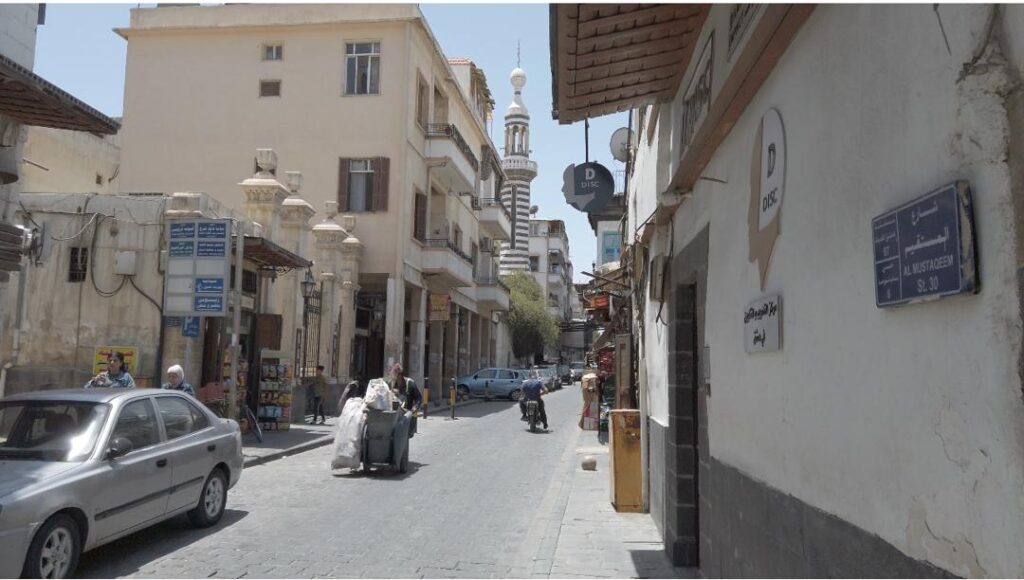
Enter from the east through Bab Sharqi, the Roman “Eastern Gate.” It is the only Damascus gate that still keeps its triple-opening Roman form: a large central passage for carts and two smaller side passages for people. Cross the threshold and you are on Straight Street; go all the way west and you reach Bab al-Jabiya. In the middle you’ll meet a Roman triumphal arch that once marked the crossing of the north–south street (the cardo). The arch was excavated about five meters below the present road level in 1950 and re-erected on the surface in the same spot, which is why it looks “high” against today’s paving.
The street’s western half is often called Midhat Pasha Street (after the Ottoman governor who roofed sections and modernized the market in the late 1800s). The eastern half is commonly called Bab Sharqi Street. Locals use all these names, so if you ask for Straight Street, Via Recta, Midhat Pasha, or Bab Sharqi Street, people will point you to the same axis.
Why this street matters to Christians

Straight Street is mentioned in the Acts of the Apostles. Saul of Tarsus (later Saint Paul) came to Damascus; on “the street called Straight” he was met by Ananias, who restored his sight and baptized him. For many Christian pilgrims, walking this street—especially its eastern section near Bab Sharqi—and visiting the small underground Chapel/House of Ananias nearby is part of retracing that story. The Ananias site is a few minutes’ walk inside the Christian Quarter, just off the east end.
A quick mental map for your walk
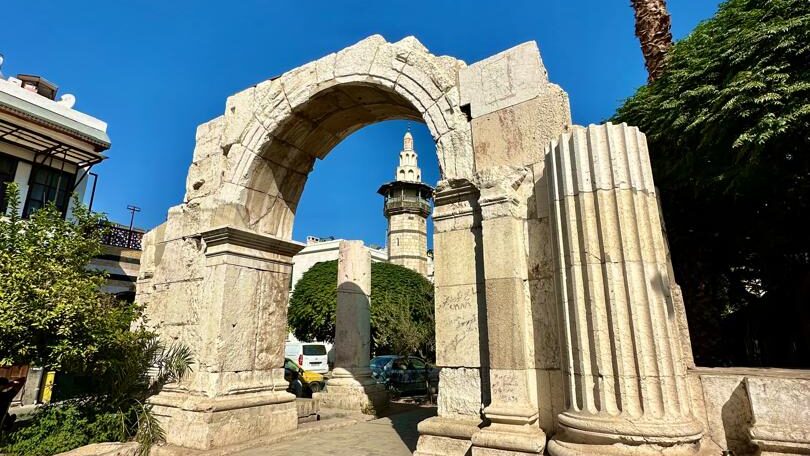
Start at Bab Sharqi (east), pass under the Roman gate, and walk west. Soon you’ll reach the Roman Arch where the old cardo crossed. Keep going and the street gets busier toward the western end, where the covered Midhat Pasha section turns into a souq. If you reverse the walk and finish back at Bab Sharqi, you have easy access to cafés, churches, and the evening scene at the east end.
Shops and workshops along the way
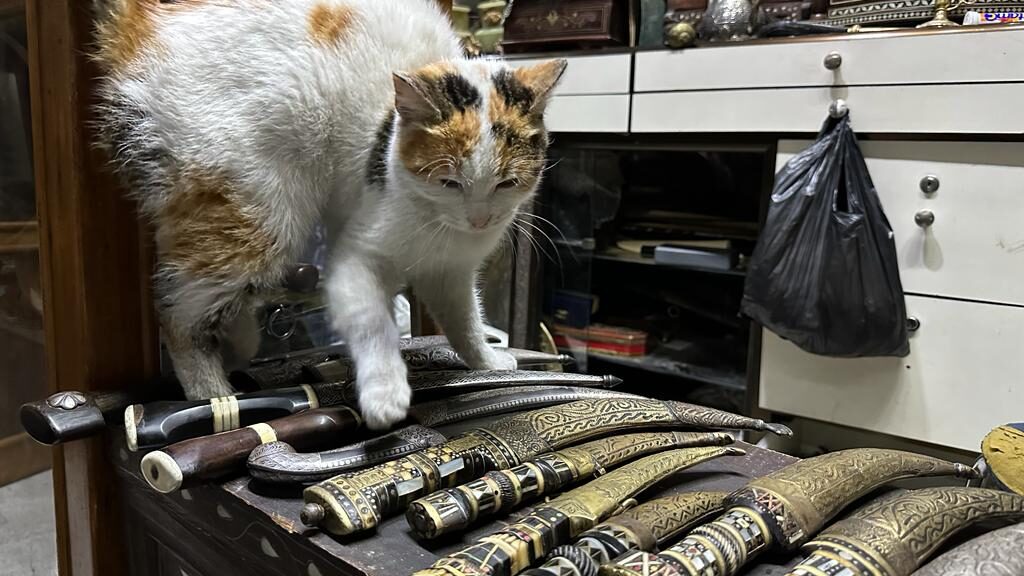
You will see a mixed street economy: tailors, textiles, antique and souvenir sellers, spice and soap shops, icon shops, jewelers, and working artisans in side alleys.
- Wood mosaic (mother-of-pearl) boxes and furniture. Damascus is known for marquetry—small pieces of wood, bone, and shell set into geometric patterns. Several galleries along and just off Straight Street specialize in this; many also show Damascene swords, copper and brass trays, and other craft items under one roof.
- Silver and gold jewelry. A few long-running family shops sit on or just off the street; one contemporary silver studio is right on Straight Street.
- Textiles and looms. You may hear “kilim” (flat-weave rug). Small workshops and showrooms near Bab Sharqi and in the side lanes sell flat-weaves, brocade, and other fabrics; the Old City has documented weaving traditions and historic looms. If you spot a horizontal loom or a Jacquard frame behind a storefront, step in and watch.
- Damascene blades. A few shops market swords and knives that celebrate the city’s blade-making heritage. Even if the steel is modern, the forms, hilts, and inlay follow local craft. Compare patterns and fittings before you buy.
- Ceramic tiles, coins, banknotes, and “old things.” Dealers in vintage objects are scattered along the route; you’ll find Ottoman-style tiles, calligraphy panels, and old currency among the curios. Expect a wide range of quality and age—ask questions and look closely.
Tip: Many stores are deeper than they look. If a shop has a narrow door, ask if there is a back room or cellar.
Food and quick stops on the street
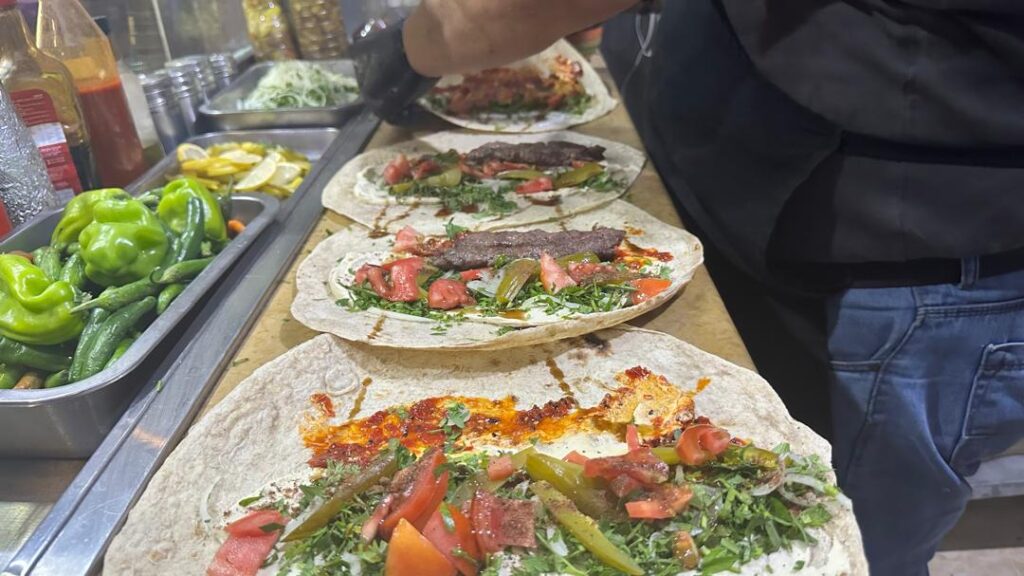
You can treat Straight Street as a slow snack walk: falafel, fresh juices, shawarma, saj wraps, and simple grills appear every few blocks—especially near the lively eastern end around Bab Sharqi and the neighboring Bab Touma squares. In the evening, that end fills with locals meeting before dinner or a café. (For a quiet courtyard coffee, see Qishla Café below.)
Evening life near Bab Sharqi (east end)

The Bab Sharqi side of Straight Street has a compact cluster of bars and rooftops within a short walk. Names change, but you’ll find places like De Marine Bar, Chandelier Bar, and rooftop lounges in small hotels. They serve standard drinks and light food, often with outdoor seating, and stay open late. It’s a modest scene, but it gives the street a clear evening rhythm.
A few places to step off the street

- Bab Sharqi (Eastern Gate). Best single photo of the Roman gate plan. The triple opening is original in concept and unique among Damascus gates.
- Roman Arch (mid-street). Marker of the Roman grid crossing; it shows how much the city has risen above the ancient level.
- Mariamite (Greek Orthodox) Cathedral. On or near Straight Street; seat of the Greek Orthodox Patriarch of Antioch; explains the street’s long link with Christian life.
- House/Chapel of Ananias. Underground chapel associated with the meeting of Ananias and Saul; reached by a short stair.
- Qishla Café. A hidden courtyard café between Straight Street and the old Jewish Quarter; useful when you want a break from market noise.
- Via Recta Hotel. Boutique hotel near Bab Sharqi; good example of a historic house adapted to a small hotel (courtyard, wood ceilings).
- Hidden brocade workshop. If you want to see Damascus silk brocade up close, there is a small Old City workshop just off Straight Street called Al-Sakhra Foundation. Ask a nearby shopkeeper for directions and visit when the loom is running
Notable visitors tied to this walk
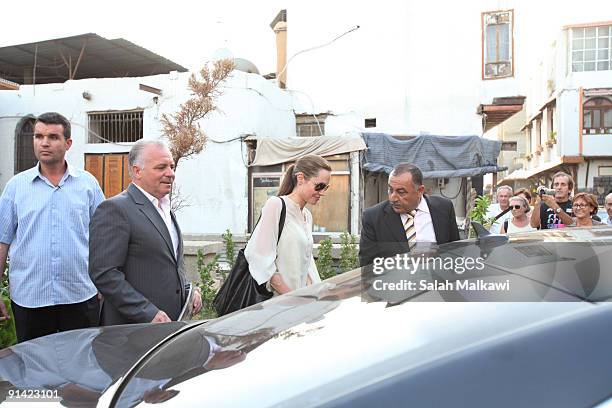
The street appears in many travel accounts. In modern times, public figures have visited the Old City and nearby landmarks: Jimmy Carter toured Old Damascus in 2008 (press photos show him visiting holy sites); Angelina Jolie and Brad Pitt visited in 2009 on humanitarian work and were reported sightseeing in the Old City markets. Motorcades and cameras aside, they crossed the same fabric you’re walking now.
How the street changed over time
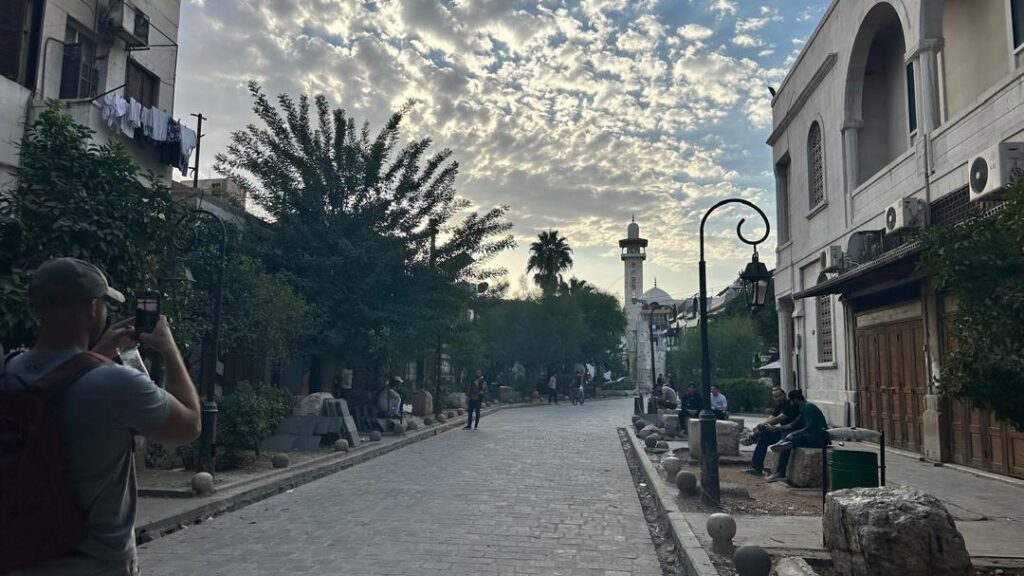
The basic line dates to the Hellenistic and Roman periods. Over the centuries, street levels rose, shopfronts extended, and sections were roofed to create a covered market in the west. In the 20th century, archaeologists re-erected the Roman Arch on its spot after finding it about five meters down. The names also reflect each era: “Straight Street,” “Via Recta,” “Midhat Pasha Street,” and “Bab Sharqi Street” all describe the same axis viewed through different periods. It remains a working street, not a sealed exhibit.
Walking it today: what to look for
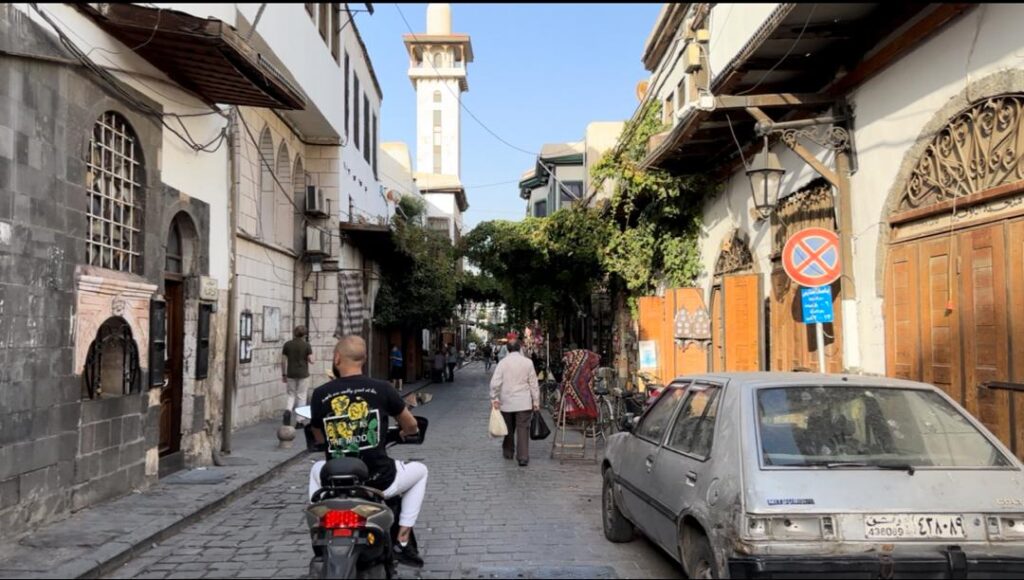
Look at three levels:
- At your feet: changes in paving and slope show later layers built over older ones.
- At doorway height: narrow doors often hide deep rooms; ask to see the back.
- Up above: note wooden mashrabiyyas, roofed souq sections in the west, and open sky near the Roman Arch and Bab Sharqi.
Numbers that help: the full length is about 1.5 km; a direct walk takes 20–25 minutes, but side lanes make it a 2-hour visit easily. The line runs east–west; mornings and late afternoons are most comfortable in warm months.
Safety and simple etiquette

The street is busy by day and livelier near the east end in the evening. Watch carts and cars in the covered west. Ask before photographing people. Bargaining is normal for crafts and antiques; food prices are usually posted. In churches and the Ananias chapel, dress and speak respectfully. At night, stick to lit sections and the main alleys around Bab Sharqi and Bab Touma, as most visitors do.
How Straight Street fits your wider visit
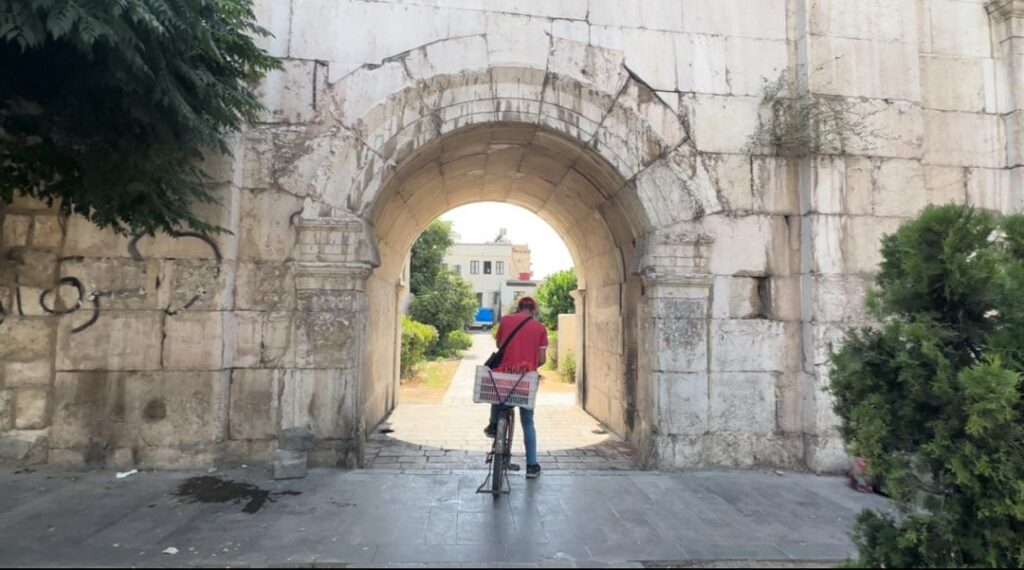
Most travelers pair Straight Street with the Umayyad Mosque, Al-Hamidiyyeh Souq, and the Old City’s palaces and khans. If you start at Bab Sharqi in the afternoon, end near the western markets before sunset, then return east for dinner or a café. If faith sites are your focus, begin with the Ananias chapel and work west, then add Bab Kisan / St Paul Chapel on another loop. If you’d like a local pace and simple access to these stops, you can quietly join one of our small Damascus walks that follow this same route and its side lanes.
UNESCO note

Straight Street runs inside the Ancient City of Damascus, a UNESCO World Heritage Site since 1979. The listing protects the Old City’s plan and its mix of monuments and daily fabric: gates, mosques, churches, houses, and markets—including this long east–west spine.
Key facts to remember (quick recap)
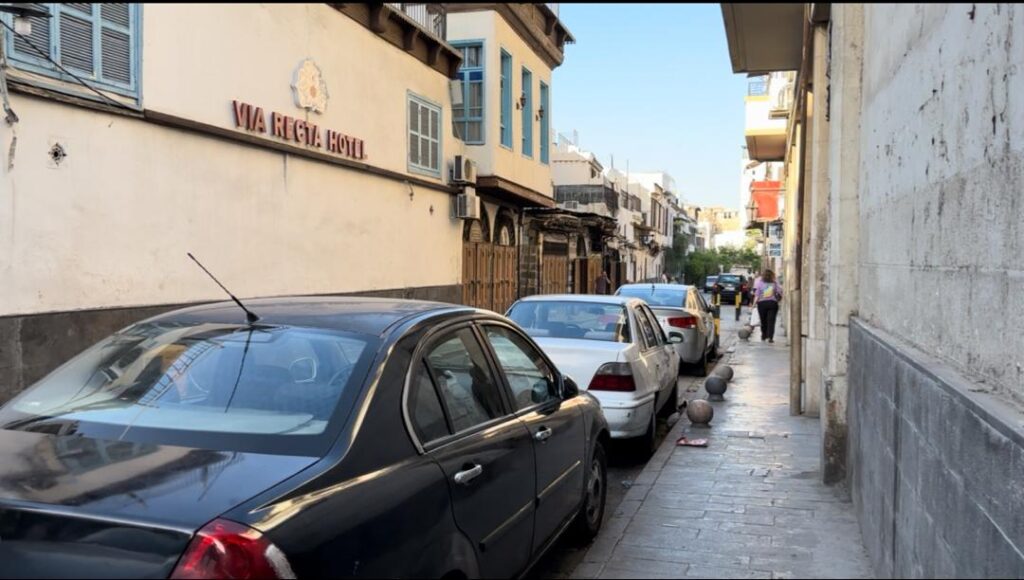
- Age: around 2,000 years (classical/Roman alignment).
- Length: about 1.5 km.
- Direction: east–west, Bab al-Jabiya → Bab Sharqi.
- Names: Street Called Straight (Bible), Via Recta (Latin), Midhat Pasha Street (west, covered), Bab Sharqi Street (east, open).
- Biblical note: Acts 9:11; Saul met Ananias here; related sites: Ananias Chapel and St Paul at Bab Kisan.
- Markers: Roman Arch mid-street (re-erected from 5 m below); Bab Sharqi triple-passage gate.
- Nearby: Buzuriyyeh spice lane, Khan Asʿad Pasha, Azm Palace, Mariamite Cathedral, cafés like Qishla, and Via Recta Hotel by the gate.
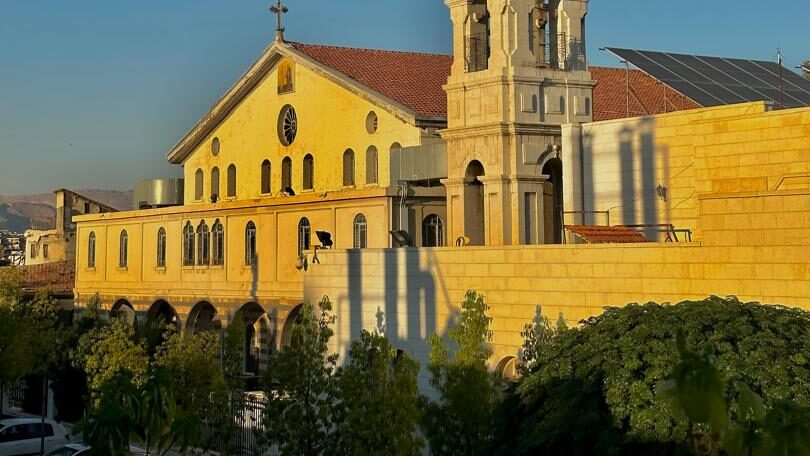
If you keep these points in mind, Straight Street stops being a legend and becomes a clear route you already understand—east to west, gate to gate, with two thousand years of city life around you.
